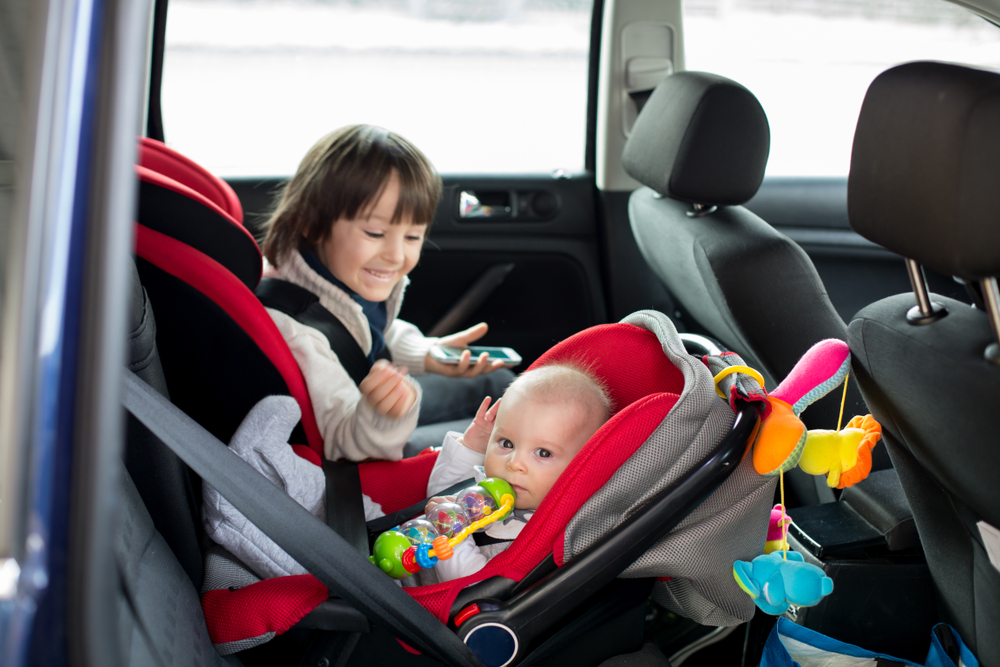When it comes to children, the main focus of parents behind the wheel is safety. While parents take all kinds of safety measures in their homes and when they are out and about with their children, it can be so easy to dismiss proper safety in automobiles. However, protecting your child in the car should be a number one priority, especially since motor vehicle accidents are the leading cause of child injury and death every year.
According to the National Highway Traffic Safety Administration (NHTSA), more than 1,000 children died and 178,000 were injured in automobile accidents in 2015 in the United States. This means that three children die per day while another 500 are injured in automobile accidents. Of these deaths, 73 percent are passengers in the vehicles, and only 39 percent of these children weren’t buckled in or in car seats. Additionally, more than 61 percent of these children were properly restrained.
While these statistics seem scary, child safety seats can reduce fatal injury by up to 71 percent. For this reason, you need to continue to use car seats and booster seats properly to protect your child.
Types of Injuries Sustained by Children
According to an NHTSA study, the most common injuries sustained by children under the age of eight in car crashes are:
- Head Injuries: These are the most likely injuries for children to sustain when in a car crash. Common head injuries include concussions, traumatic brain injuries (TBIs), unconsciousness, contusions, lacerations, and fractures at the base of the skull.
- Thoracic Injuries: Infants under 12 months old are most likely to suffer rib fractures and lung injuries. Internal bleeding can also occur. Usually, these injuries were caused by the car seat restraints.
- Glass Injuries: Broken windows can cause lacerations on a child’s face and body, and these injuries can cause scarring.
- Fractures: It is common for children to suffer hand, foot, and wrist fractures when bracing for the impact of a car crash. Seat belts can also cause broken pelvises. In the event that a child is thrown from the vehicle, femur and arm fractures are common.
- Whiplash: The impact can cause a rapid back and forth movement of the neck—much like the cracking of a whip. Whiplash most commonly occurs when a vehicle is rear-ended.
- Psychological Injuries: Car crashes can be traumatic events. Emotional trauma can arise hours or even days after an accident. Therapy can be helpful in dealing with the emotional turmoil associated with a crash.
- Permanent Disability: Spinal cord injuries, nerve damage, or loss of limb are considered incapacitation injuries. These permanent disabilities are most often caused by rollover accidents, which are also the leading cause of fatal injuries in children.
If your child or children are injured in a car accident, contact Doug Horn today.
How to Protect Your Child in a Car Crash
Even though statistics show that children can be seriously injured or killed when properly restrained in car seats, the best thing you can do to protect your child in the event of a car accident is to ensure that they are always placed in his or her car seat correctly.
The first step to keeping your child safe is to have them facing the correct way in the vehicle. Babies under the age of two should be in a rear-facing car seat. If possible, keep car seats in the middle of the back seat to protect children in the event of a rollover accident or side-impact crash. Car seats should never be placed in the front seat of a car.
Here are a few other ways you can protect your child:
- Buy a Safe Vehicle: While you might not be able to go out and buy a brand-new vehicle with all of the bells and whistles when it comes to safety features, try to purchase the safest vehicle that you can afford. A few safety features you should look for include stability control, anti-lock brakes, lane departure warnings, and adaptive cruise control.
- Be an Attentive Driver: It is very easy to get distracted when you are behind the wheel. Whether it is your children making noise or your cell phone, you need to take measures to prevent distractions. Put any distracting items away and stay focused on the road. If your children really need you, pull over in a safe area to assist them.
- Don’t Drive Late and Night: Many parents are tempted to start long road trips late at night as their children sleep. However, when you are drowsy, you increase your risk of an accident. For this reason, it is best to make long drives during daytime hours.
Difficulties You May Encounter When Seeking Payment for a Child’s Car Accident Injuries
After a car accident, parents want the best possible care for their children during the treatment and recovery phase. The cost of this care can add up quickly. As costs add up, many parents want to pursue compensation from the other driver in the collision. This can be difficult, depending on the details of the accident.
Both economic and non-economic damages can be received after an automobile accident. Economic damages include anything you have directly paid or lost as a result of an accident. These could be car repairs, medical bills, and lost working time.
Non-economic damages are often called pain and suffering. These damages compensate victims for emotional distress or loss of a loved one. These types of losses have no assigned dollar value. As a result, insurance companies commonly try to minimize these types of damages making retaining an attorney important to receiving a full and fair recovery.
If you or someone you know has had a child who was injured in an automobile accident, contact Horn Law today at 816-795-7500. We offer free consultations and work hard to get our clients the money they deserve after car accidents.






